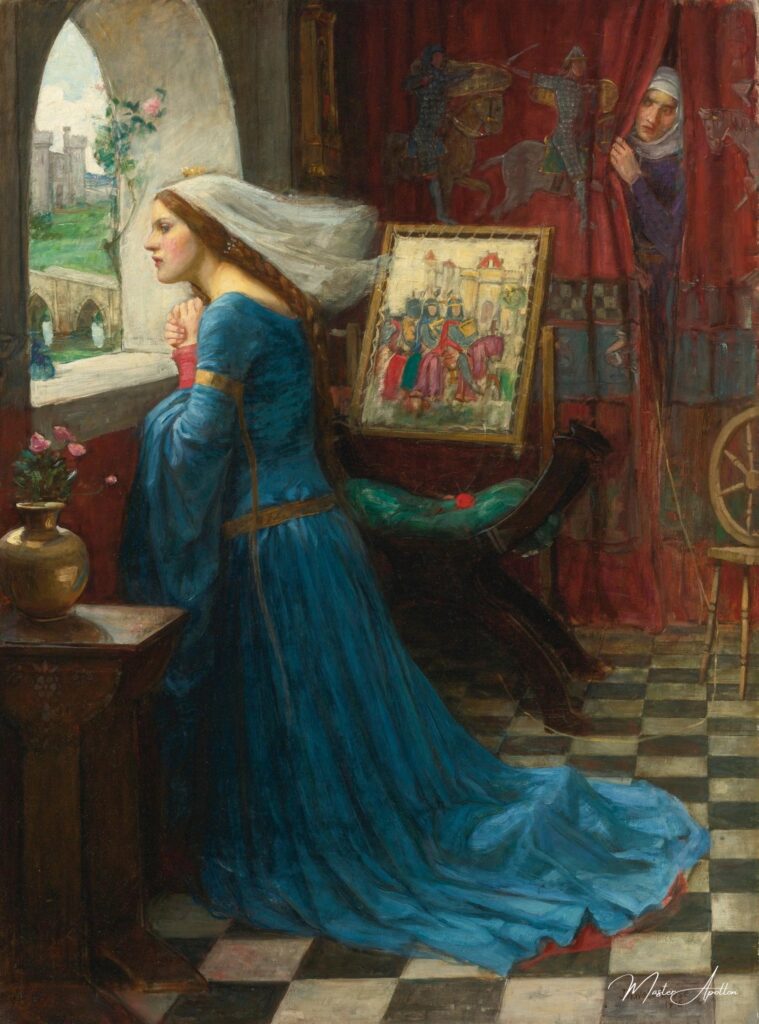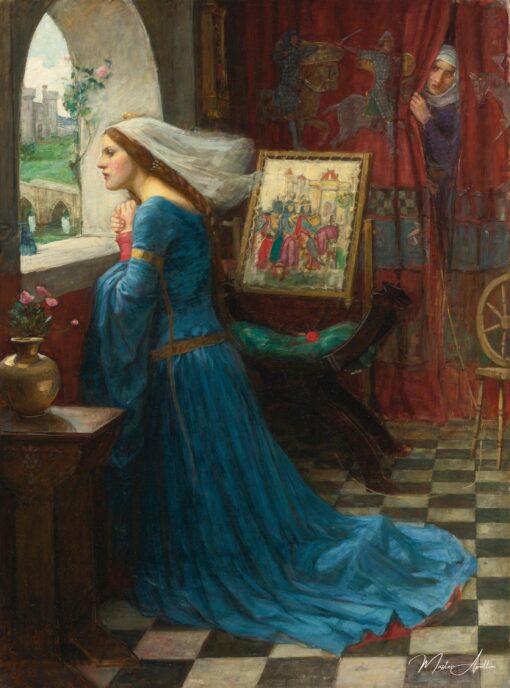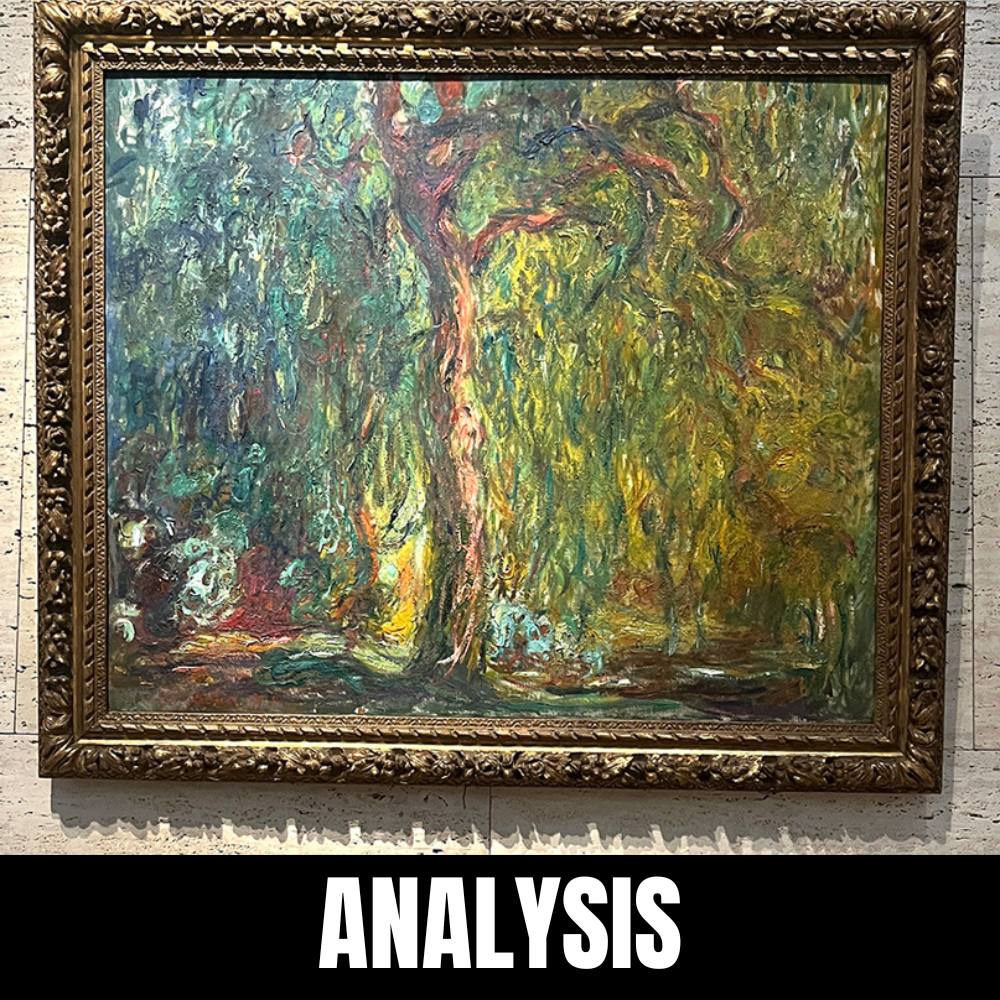Your cart is currently empty!

Fair Rosamund – John William Waterhouse
Immerse yourself in the enchanting world of Fair Rosamund, a stunning oil painting reproduction by the renowned artist John William Waterhouse. This exquisite piece captures the ethereal beauty and tragic allure of Rosamund, a figure steeped in history and romance. Each brushstroke is a testament to Waterhouse’s mastery, bringing to life the delicate interplay of light and shadow that dances ac…
Fair Rosamund – John William Waterhouse
John William Waterhouse, one of the most celebrated artists of the Pre-Raphaelite movement, was renowned for his vivid depictions of mythological and historical subjects. One such masterpiece, Fair Rosamund, painted in 1917, brings to life the tragic story of Rosamund Clifford, a figure from English history who became the mistress of King Henry II. Waterhouse captures the essence of this historical drama with his signature blend of beauty, melancholy, and symbolic depth, offering viewers an intimate glimpse into a poignant moment in Rosamund’s life.

The Story Behind Fair Rosamund
Fair Rosamund was a legendary beauty who captivated King Henry II, who took her as his mistress, despite his marriage to Eleanor of Aquitaine. Her story is one steeped in intrigue and drama, with elements of courtly love and betrayal. It is said that Rosamund became the king’s favorite and was hidden away in a labyrinthine garden to protect her from the prying eyes of his wife.
Her life was marked by beauty, but also by scandal, and Waterhouse’s painting encapsulates the delicate balance between innocence, allure, and tragic fate. The painting captures a moment of respite in Rosamund’s life—perhaps a quiet moment of reflection in the garden that symbolizes both her sanctuary and her eventual demise.
Composition and Symbolism
1. The Central Figure – Rosamund in the Garden
In Fair Rosamund, Waterhouse presents the central figure of Rosamund in a moment of repose, seated in a lush, verdant garden. Her beauty is undeniable, with flowing blonde hair, a delicate gown, and a contemplative expression that captures her inner thoughts. The softness of her appearance contrasts with the deeper, darker undertones of her story, which is centered around a forbidden relationship and the consequences that followed.
Waterhouse’s depiction of Rosamund is both ethereal and haunting, with her fragile beauty serving as a symbol of her vulnerability. The graceful pose, her flowing attire, and the gentle expression all suggest an innocence and purity that belies the tragic fate that awaits her. Her gaze, directed downward and thoughtful, may indicate her awareness of the precariousness of her position in the king’s life and in the larger, more dangerous courtly world.
2. The Garden – A Place of Sanctuary and Entrapment
The garden surrounding Rosamund is as much a part of the painting as the figure herself. Rich with symbolic meaning, it represents both sanctuary and entrapment. Waterhouse uses lush greenery, flowering plants, and winding paths to evoke the dual nature of the garden: a private retreat for Rosamund, where she is shielded from the world, but also a space in which she is confined, unable to escape her situation.
The garden’s labyrinthine qualities also evoke a sense of being lost or trapped, a subtle reference to Rosamund’s fate. Her beauty and position as the king’s mistress might offer her some protection, but the garden also alludes to the limitations of that protection. The vibrant flowers and green foliage contrast with the darker implications of Rosamund’s life story.
3. The Color Palette – Softness and Tragedy
Waterhouse uses a soft, muted color palette to convey both beauty and sadness. The pale pinks and whites of Rosamund’s gown, her golden hair, and the soft greens of the garden all create an atmosphere of calm, yet there is an underlying tension in the scene. The lightness of the colors may suggest a fleeting moment of peace, but this tranquility is undercut by the knowledge that Rosamund’s life will not remain undisturbed.
This choice of color not only serves to highlight the beauty of the figure but also creates a contrast between her outward appearance and the inevitable heartbreak of her situation. The light, dreamlike quality of the scene reflects the transient nature of Rosamund’s happiness, as well as the fragile, ephemeral quality of beauty and love in the face of fate.
Themes and Interpretation
1. Beauty and Tragedy
One of the central themes in Fair Rosamund is the tension between beauty and tragedy. Rosamund is portrayed as an image of perfect beauty, yet her story is anything but beautiful. She was ultimately poisoned by Eleanor of Aquitaine, who, in a fit of jealousy and rage, sought to end the relationship between her husband and his mistress. This tragic end hangs over the painting, giving it a sense of fleeting beauty, where the moment of grace captured by Waterhouse will soon be lost to history.
The juxtaposition of her serene beauty and the darker undertones of her fate speaks to the idea that beauty, while captivating, cannot protect one from the forces of power, jealousy, and betrayal. Waterhouse’s portrayal of Rosamund suggests that even the most enchanting figures are not immune to the harsh realities of life.
2. The Power of Desire
Rosamund’s relationship with King Henry II is driven by desire, a force that often blinds individuals to the consequences of their actions. Waterhouse’s depiction of Rosamund as both innocent and aware of her power over the king suggests a complex dynamic of seduction, passion, and the emotional turmoil that arises from such intense relationships. The painting evokes the idea that desire, while beautiful and compelling, can also lead to destructive consequences when it is not tempered by wisdom and understanding.
In the context of the painting, Rosamund’s desire for affection and recognition is clear, but so too is the underlying tension between her and the world around her. The garden in which she is placed may be beautiful, but it is also a metaphorical prison, indicating that her desires are ultimately trapped within the confines of a society that would not accept her as the king’s mistress.
3. Isolation and Entrapment
Rosamund’s isolation in the garden is another key theme in Fair Rosamund. While the garden can be seen as a retreat and a safe space, it also serves as a symbol of her entrapment. Waterhouse highlights the psychological and emotional isolation that Rosamund must have felt, as she navigated her forbidden relationship with the king and the jealousy of Eleanor. The labyrinthine garden, with its winding paths and lush growth, visually underscores this feeling of confinement.
Though Rosamund is surrounded by beauty, she is nonetheless alone, a woman caught in the trap of her circumstances. The figure of Rosamund, framed by the verdant foliage, seems almost like a prisoner within the paradise that was meant to protect her. This adds a layer of poignancy to her character and reinforces the tragedy of her situation.
Waterhouse’s Technique and Legacy
Waterhouse’s artistic technique is on full display in Fair Rosamund. His attention to detail, particularly in the textures of Rosamund’s gown, her golden hair, and the lush foliage surrounding her, is remarkable. The soft rendering of the figure contrasts with the more detailed and textured elements of the garden, creating a sense of depth and dimensionality. This mastery of texture and detail enhances the emotional impact of the painting, making the viewer feel the tension between the serenity of Rosamund’s form and the underlying threat of her fate.
The delicate, ethereal quality of the painting speaks to Waterhouse’s deep understanding of how to capture the beauty of both human figures and nature. His ability to weave together the beauty of the feminine form with the dramatic undertones of historical narratives sets him apart as one of the most skilled and evocative painters of the Pre-Raphaelite movement.
Conclusion
Fair Rosamund is a powerful exploration of beauty, desire, and tragedy. Through the story of Rosamund Clifford, Waterhouse examines the fleeting nature of beauty and the complexities of desire, isolation, and power. The painting stands as a testament to his skill in capturing not just the physical beauty of his subjects, but also their emotional depth and the darker currents that run beneath the surface. Rosamund’s story, forever captured in Waterhouse’s canvas, is one of love, loss, and the inescapable consequences of fate—truly a masterpiece in every sense of the word.
John William Waterhouse
John William Waterhouse was a British painter known for his enchanting depictions of mythological and literary themes, characterized by rich colors, emotional depth, and a focus on female figures that often evoke a sense of longing and beauty.





Leave a Reply